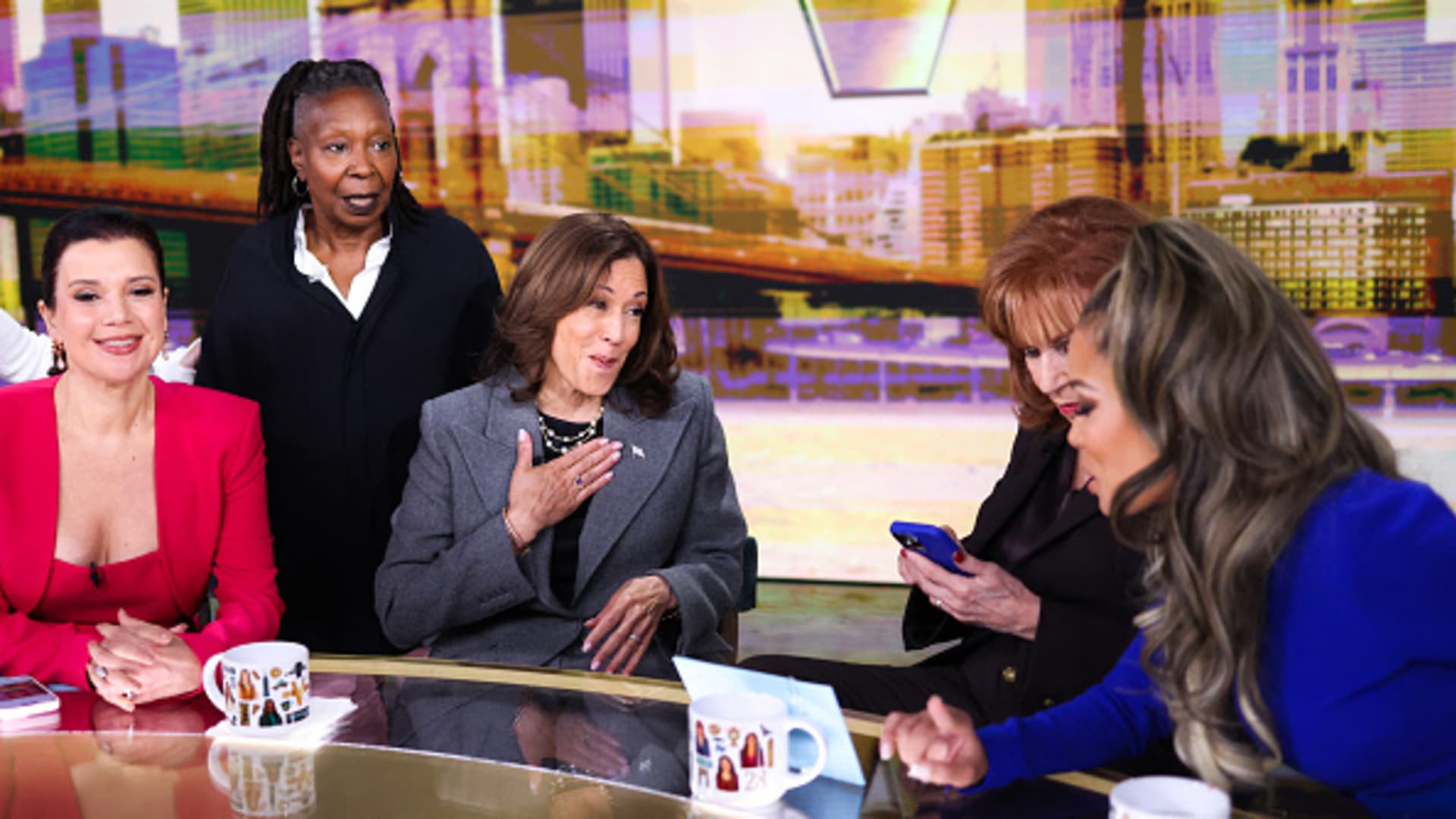US Vice President and Democratic presidential nominee Kamala Harris is pictured in studio at ABC during a break during the recording of the show “The View” in New York on October 8, 2024.Â
Charly Triballeau | Afp | Getty Images
Vice President Kamala Harris announced a new proposal on Tuesday that would require Medicare to cover the costs of long-term care at home.
That coverage could potentially allow millions of seniors and people with disabilities to get care at home rather than in a nursing facility.
More than 37 million people, or 14% of the adult population, provide some form of unpaid eldercare in the United States, according to the U.S. Bureau of Labor Statistics. The majority of these caretakers, around 59%, are women.
Harris’ universal in-home care proposal would require congressional action. But it could offer unprecedented relief to Americans who currently act as caregivers for family members. The vice president pointed out that her plan could be especially beneficial to those caring for both their aging parents and their children.
“It’s just almost impossible to do it all, especially if [caregivers] work,” Harris said on ABC’s “The View,” where she first laid out her plan. “We’re finding so many are them having to leave their jobs, which means losing a source of income, not to mention the emotional stress.”
Tricia Neuman, senior vice president and executive director of the Program on Medicare Policy at KFF, said Harris’ proposal was historic.
“It’s been a long time â decades â since a presidential candidate put forward a Medicare proposal to help middle income families cope with the crushing cost of home care,” Neuman said.
Medicare currently doesn’t typically cover long-term care services at home. Medicaid is the primary source of public support for such care, but families have to demonstrate a very low income to qualify. Coverage and eligibility also vary widely by state.
“This leaves many middle income families on the hook for the cost of caring for an aging parent or grandparent,” Neuman said.
The cost of providing in-home long-term care services is staggering. KFF estimated that paying for a professional live-in home health aide, for example, can cost more than $288,000 a year.
Harris’ plan could cost around $40 billion a year, according to one estimate by The Brookings Institution. Harris said it would be paid for with the money the government is saving from its new power to negotiate drug prices with manufacturers.
“We’re going to save Medicare the money because we’re not going to be paying these high prices,” Harris said.
On “The View,” Harris talked about taking care of her own mother, who was battling cancer at the time.
“It’s a personal experience for me as well, as something I care deeply about,” Harris said. Her mother, who was a cancer researcher, died in 2009 at the age of 70.
In addition to improving the lives of caretakers, the coverage expansion could also enhance the lives of older people, the vice president said.
“It’s about dignity for that individual, and independence for that individual,” she said.
More than two-thirds of adults over the age of 50 want to remain in their homes for the long term, according to research from AARP.
Neuman suggested that Harris’ policy was a smart one to roll out toward the end of an extremely close presidential race between her and former President Donald Trump.
“This is an issue that resonates with the public because it affects families regardless of political leanings,” she said.

